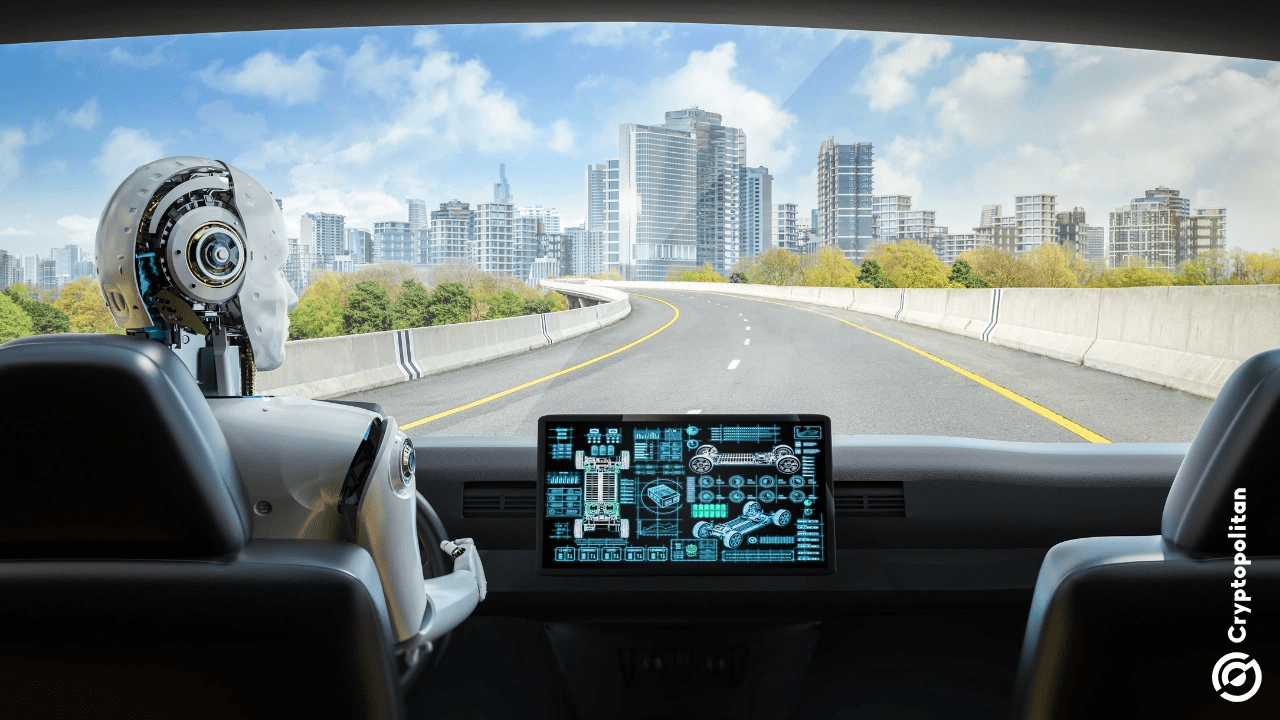according to materials from the site - By Cryptopolitan_News

The battle for dominance in the robotaxi market has officially begun, and both the US and China are striking blows. Companies on both sides have moved from testing to full-scale deployment.
According to data published by CNBC, Waymo, owned by Alphabet, claims to currently operate over 1500 robotaxis in San Francisco, Los Angeles, Phoenix, and Austin, completing over 250,000 paid rides weekly. Tesla, meanwhile, has just entered this market, launching a project in Austin.
Across the Pacific, competition is becoming even more intense. Barclays estimates the current number of robotaxis in China at about 2000, most of which operate in the country's largest cities. The bank forecasts that this number could grow to 300,000 by 2030, accounting for about 5% of the total on-demand transport in major cities.
Chinese authorities allowed companies to charge for rides starting from the suburbs of Beijing at the end of 2021. Shanghai followed suit in July 2025, giving a new green light to autonomous paid rides.
Pony AI launches robotaxi in four Chinese megacities
Pony AI, a Chinese technology company registered in the US, is currently the only robotaxi operator authorized to charge passengers in Beijing, Shanghai, Guangzhou, and Shenzhen. The company does not disclose the number of robotaxis operated, but claims that each vehicle makes an average of 15 rides per day.
In a note last week, analysts at Bank of America wrote: "We believe this important milestone [in Shanghai] demonstrates Pony's technological and operational readiness in the robotaxi sector." The company forecasts growth in its scale and profitability, setting a target stock price of $21, implying a 60% increase from last Friday's close.
Tiancheng Lu, the CTO of Pony, stated in an interview at the end of July that he is focused on improving safety, reducing costs, and simplifying the robotaxi hail process. Tiancheng added that the company has already begun testing its latest robotaxis in Beijing and has reduced equipment costs by 70%. Pony plans to release its earnings report on August 12.
Another Chinese player, WeRide, reported last Thursday that its revenue from robotaxi sales in the second quarter reached a record $6.4 million. Morgan Stanley also recommended the company's stock for purchase but warned that it would remain volatile and dependent on the developments both in China and abroad.
"We believe that progress in the global development of robotaxis will accelerate the pace of development and implementation of L4 AD robotaxis in China," analysts stated. They also noted that old automakers and policymakers in leading economies will not want to lose autonomous vehicles again after falling behind China in the electric vehicle sector.
Chinese companies are quicker to penetrate overseas markets than American ones.
While Waymo is just starting its operations abroad, launching its project in Japan, Chinese companies have already expanded their operations. WeRide claims to be the only company that has received permits for autonomous driving in Saudi Arabia, the UAE, China, Singapore, France, and the US.
The company also reports that it has launched a pilot robotaxi project in Riyadh in partnership with Uber. In mid-July, Baidu announced an agreement to launch its Apollo Go robotaxi on the Uber platform, with the launch in Asia and the Middle East planned for late 2025.
The US and mainland China were not included in the agreement, as Uber's Chinese business was bought by Didi. Bank of America stated that Apollo Go prices on Uber are likely to correspond to human driver prices.
The bank added: "We believe that the price in the overseas market may be several times higher than in China, so its profitability abroad may be much greater." Analysts set a target price for Baidu at $100, and the company is expected to release its earnings report on August 20.
According to Barclays, Baidu has already reached breakeven in Wuhan, excluding research and development expenses. Most Chinese robotaxi manufacturers are also close to breakeven. Analysts explained that the ability to design and produce cheaper robotaxis is the main reason these companies can achieve breakeven, excluding research and development costs and headquarters maintenance, by the end of 2025.
The cost difference is obvious. According to available data, the cost of one Waymo vehicle is about $200,000. The price of Baidu's Apollo RT6 is about $37,000, while the latest model from Pony costs about $42,000, and WeRide is slightly more expensive.
#MarketRebound , #Сryptomarketnews
In this group, we strive to promptly inform readers about informational news (more than a dozen sites) related to changes in the cryptocurrency market and financial markets. There is no goal here to impose on any of the readers the correctness (or incorrectness) of the site's article!
The information is retransmitted by us with the aim of familiarizing with changes in the "news agenda", and without claims to originality! Conclusions after reading this information, every sane person will always make independently!!!
Everything is quite simple. Our subscribers learn about everything a little earlier than others from one news feed, saving time on searching for relevant news!!!


